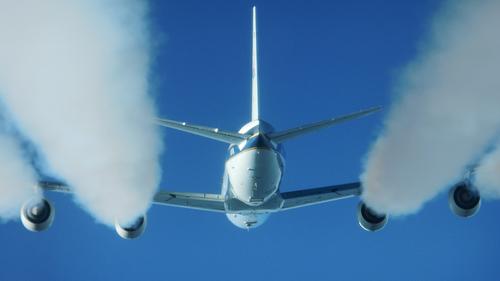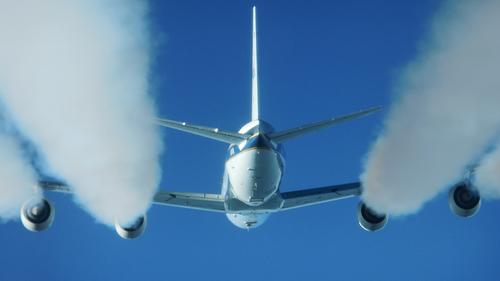NASA Starts Biofuel Flight Tests
March 12, 2013

NASA has begun a set of flight tests of biofuels based on nonfood plants to determine their emissions and performance effects on jet engines. The tests started Feb. 28 using NASA's DC-8 aircraft, which was outfitted as a laboratory and was tracked by a Falcon HU-25 equipped with instrumentation.
The biofuel is based on the camelina plant, a relative of mustard and canola. It's also a relative of oilseed, the basis of the 100 percent nonfood jet fuel used by Canada's National Research Council last fall to power a Falcon 20 civil jet. (See: First Civil Jet Flies on 100 Percent Non-Food Biofuel.) Camelina oil is a commercial crop, and the EPA has just approved its use as a low-carbon feedstock under the Renewable Fuel Standard Program.

NASA's tests, expected to continue for about three weeks, are being conducted under the Alternative Fuel Effects on Contrails and Cruise Emissions (ACCESS) project run jointly by NASA's Glenn Research Center in Cleveland, its Langley Research Center in Virginia, and its Dryden Aircraft Operations Facility in Palmdale, Calif. The tests will be conducted primarily at Edwards Air Force Base. The DC-8 will fly at altitudes of up to 40,000 feet, and the Falcon HU-25 will follow it at distances from 300 feet to more than 10 miles.
The tests will compare emissions, performance, and contrails generated by the aircraft using two different fuels: standard JP-8 jet fuel and a blend of equals parts JP-8 and camelina oil-based fuel. The primary aim is to determine the effects of the different fuels on the environment. The DC-8, based at NASA's Dryden facility, has been modified to support the Airborne Science mission. NASA has used the aircraft for research such as testing prototype satellite instruments, verifying data received from satellites, receiving telemetry data from space vehicles while they are launched or during re-entry, and investigating surface and atmosphere conditions on Earth.
The ACCESS program is being conducted under the aegis of NASA's Fixed Wing Project, part of the agency's Aeronautics Research Mission Directorate. Next year, NASA plans to perform more extensive ACCESS flight tests based on data gathered from these flights.
Alternative fuels are not a new field for NASA. The agency studied alternatives with ground-based instruments in 2009 and 2011. Past research has looked at fuels based on algae and chicken fat.
Related posts:
About the Author(s)
You May Also Like



